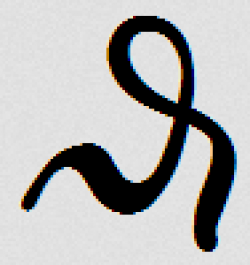Proofreading Marks
This page lists of the various symbols in the Proofreading Marks group.
Proofreading is the reading of a galley proof or computer monitor to detect and correct production-errors of text or art. Proofreaders are expected to be consistently accurate by default because they occupy the last stage of typographic production before publication.
Symbols in this group:
Caret
Caret is an inverted V-shaped grapheme. Specifically, caret commonly refers to the spacing character ^ in ASCII (at code point 5Ehex) and other character sets that may also be called a hat, control, uparrow, or less frequently chevron, xor sign, to the [power of], fang, shark (or shark-fin), pointer (in Pascal), or wedge. Officially, this character is referred to as circumflex accent in both ASCII and Unicode terminology (because of its historical use in overstrike), whereas caret refers to a similar but lowered Unicode character: U+2038 ‸ caret. Additionally, there is another lowered variant with a stroke: U+2041 ⁁ caret insertion point
Pilcrow
The pilcrow, also called the paragraph mark, paragraph sign, paraph, alinea (Latin: a lineā, "off the line"), or blind P, is a typographical character for individual paragraphs.
Citation
Use the citation below to add this symbols group page to your bibliography:
Style:MLAChicagoAPA
"Proofreading Marks Symbols." Symbols.com. STANDS4 LLC, 2024. Web. 27 Jul 2024. <https://www.symbols.com/group/56/Proofreading+Marks>.




Have a discussion about the Proofreading Marks group with the community:
Report Comment
We're doing our best to make sure our content is useful, accurate and safe.
If by any chance you spot an inappropriate comment while navigating through our website please use this form to let us know, and we'll take care of it shortly.
Attachment
You need to be logged in to favorite.
Log In